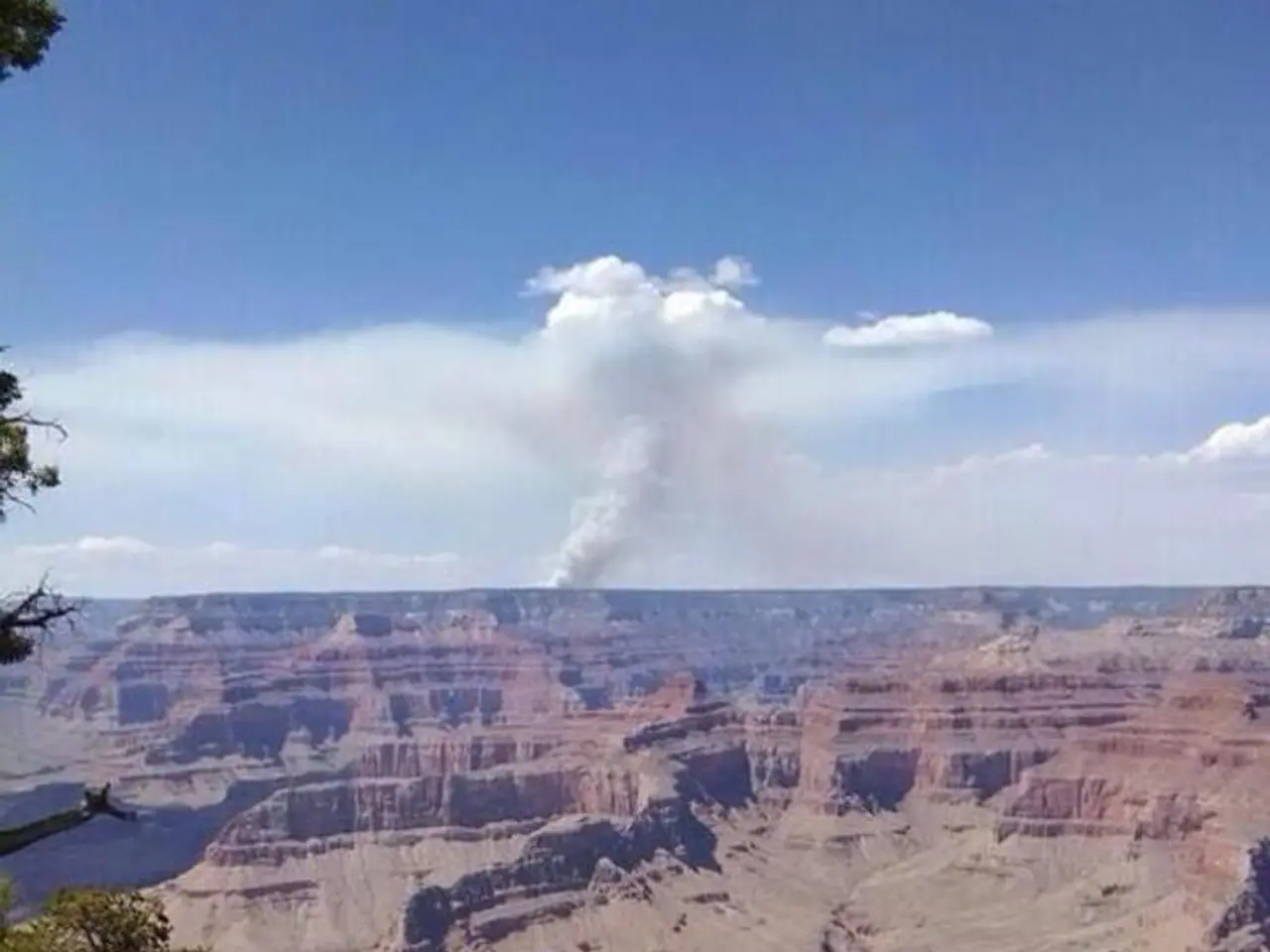Authorities issue alert for potential road damage during high temperatures - Heat-related road damage alert issued by law enforcement authorities
A stretch of Highway 29 near Oldenburg, the oldest highway in the region, has been closed off due to heat-related road damage. The police have warned drivers about the hazard and urged caution while navigating this section of the road.
The damage, referred to as "blow-ups" by experts, is a common occurrence in older concrete roads during hot weather. This phenomenon is primarily caused by thermal expansion, where the atoms in the concrete vibrate more and push against each other as temperatures rise. If the road’s concrete panels don’t have enough space at joints or cracks to expand into, the pressure builds up, causing the pavement to buckle, warp, or suddenly lift.
The repair work on the damaged section of Highway 29 is currently underway. Specialists are removing the damaged concrete, preparing the base, installing dowel bars or reinforcement, pouring new concrete with proper joint spacing and design, and sealing cracks to prevent moisture infiltration. The aim is to restore the road to its original condition, ensuring safety for drivers, and minimizing future blow-ups.
The police have closed off the damaged area between Wardenburg and Großenkneten and have ordered a reduced speed limit in the affected zone. A police spokesperson advised driving defensively, especially in hot weather, due to the risk of road cracking.
This repair work is not unusual for old concrete highways during hot weather. Concrete expands as temperatures rise, and if the road’s concrete panels don’t have enough space at joints or cracks to expand into, the pressure builds up. Moisture seeping into these cracks weakens the pavement, and when expansion exceeds what the joints allow, the concrete pushes against adjacent panels, causing the pavement to buckle, warp, or suddenly "blow up."
In sum, blow-ups occur when thermal expansion in old concrete roads is restrained at joints or cracks, causing surface buckling, and repairs focus on removing damaged sections and improving expansion accommodation. This repair work on the damaged section of Highway 29 near Oldenburg is a testament to the ongoing efforts to maintain the safety and integrity of our roads.
The community policy regarding road maintenance should include a section on preparing for and addressing heat-related road damage, such as blow-ups, to ensure the safety of citizens. Given the increased frequency of such issues due to climate-change and rising temperatures, an environmental-science approach, focusing on understanding thermal expansion and how it affects older concrete roads, could be integrated into the employment policy for road maintenance workers.







